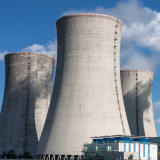
A spate of LNG supply disruptions at various liquefaction facilities, though mostly short-lived, has failed to stem losses in prices as end-users in Asia and Europe continue to hold healthy or high inventories.
All three 5mtpa trains at the 15mtpa Freeport LNG export project in Texas tripped on 13 November due to issues with the incoming power feed to the plant, environmental agency Texas Commission on Environmental Quality said on 13 November. This followed an earlier 8.5-hour trip of the plant’s third train on 9 November due to issues with the 13k-30 Variable Frequency Drive (VFD) system.
While the three trains were cooled down and restarted on 13 November itself following a near 13-hour trip, gas flows to Freeport LNG from Stratton Ridge – which is among the regions that supplies feedgas to the project – were nominated downwards on 14 November “due to Customer [Freeport LNG]’s failure to take confirmed quantities” at the location, transport service provider Gulf South Pipeline Company said on 14 November.
Separately, the 11.4mtpa LNG Qalhat facility in Oman halted production following a complete cut in power supply to the project on 14 November, offtakers of the project told SSY, adding that they are still awaiting updates on the cause and impact of the outage.
These outages followed earlier glitches in the past weeks at the 8.9mtpa Ichthys, 15.6mtpa Gorgon and 16.9mtpa North West Shelf LNG projects in Australia — all of which did little to lend support to prices.
The front-month of the Platts Japan/Korea Marker (JKM) was last assessed at $15.691/MMBtu (for the December contract) on 14 November, down by $0.271/MMBtu from the previous day and $0.353/MMBtu lower than the $16.044/MMBtu assessed at the start of the month on 1 November.
And the front-month of the Platts Northwest Europe Marker (NWE) was last assessed at $14.076/MMBtu (December contract) on 14 November, just marginally higher by $0.107/MMBtu from the previous day and down by $0.365/MMBtu from $14.441/MMBtu on 1 November.
Generally mild post-summer weather in Asia and Europe, as well as the delivery of term supplies, have bolstered stock levels, limiting spot demand by buyers and even forcing some to defer prompt term shipments to later delivery months.
LNG inventories in Japan have climbed in recent weeks, despite the approach of winter as weather remains mild. Japan’s main utilities held 2.42mn t of LNG as of 12 November, inching up by 2.1% from 2.37mn t the previous week and 0.30mn t higher than the end-November average of 2.12mn t from 2018-22.
The Japan Meteorological Agency in its latest forecast on 9 November predicted a 30-40% probability each of normal and above-normal temperatures in Japan from 11 November to 10 December, versus a comparatively lower 20-30% chance of below-normal temperatures in the same period. Its three-month forecast for November-January 2024 last updated on 24 October showed a 40-60% probability of above-normal temperatures, versus a 10-20% chance of below-normal temperatures.
The Korea Meteorological Administration is similarly expecting a higher probability of above-normal than below-normal temperatures in the coming weeks and months. It predicted a 40% probability each of normal and above-normal temperatures in November and December, versus a 20% chance of below-normal temperatures in those months in its 23 October forecast. And it predicted a 20% chance of below-normal, 50% chance of normal, and 30% chance of above-normal temperatures in January 2024 in the same forecast.
Gas inventories in Europe are also extremely high, though they have in the past week started coming off, reflecting withdrawals from the storage facilities for the peak demand winter season. Storage sites in Europe were 99.42% full as of 13 November, up from 95.68% exactly a year earlier on 13 November 2022 but down from 99.63% on 5 November when they started coming off, according to GIE (Gas Infrastructure Europe). Storage levels had risen steadily since early April this year. They stood at 55.47% on 7 April, after the end of last winter drew down stock levels.
By Kyla Schliebs, Head of LNG Research, SSY and Joey Chua, Market and Data Analyst, LNG, SSY
Articles
You may also be
interested in
View allGet in touch
Contact us today to find out how our expert team can support your business















